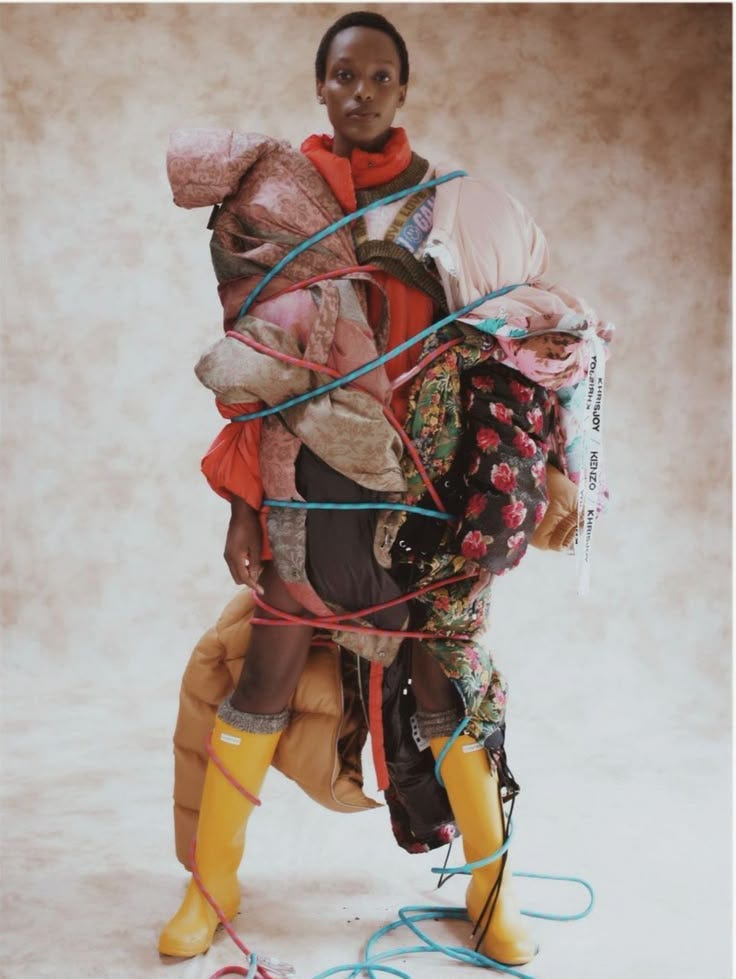Sustainability in Fashion: What European Brands Need to Know
As environmental concerns continue to grow, the fashion industry is facing increasing pressure to become more eco-conscious. But here’s the thing: it's not just about doing the right thing; it’s...
As environmental concerns continue to grow, the fashion industry is facing increasing pressure to become more eco-conscious. But here’s the thing: it's not just about doing the right thing; it’s also about following the law. That’s right, there are new and evolving sustainability regulations in Europe that fashion brands need to keep on top of.
So, what are these regulations, and how do they affect brands like yours? Let’s dive in!
1. Extended Producer Responsibility (EPR) and Recycling Fees
You might have heard the term Extended Producer Responsibility (EPR), but what does it mean for fashion brands?
Starting in 2025, the EU is rolling out new EPR regulations that will require fashion brands to take responsibility for the entire lifecycle of their products, including what happens when they’re no longer in use. This means brands will need to help fund the collection, sorting, and recycling of their products once consumers are done with them.
The best part? It encourages fashion brands to think more sustainably about the design and materials they use, as companies will pay fees based on how circular and recyclable their products are. The more eco-friendly your designs, the less you'll have to pay!
Source: EU Lawmakers Agree to New Rules Requiring Fashion Brands to Pay to Recycle Clothes - ESG Today
2. Ecodesign for Sustainable Products (ESPR)
The EU’s Ecodesign for Sustainable Products Regulation is another game changer. This new regulation sets out rules for creating more durable, recyclable, and eco-friendly fashion products. Fashion brands will be required to design their products with sustainability in mind—think longer-lasting clothes, better repairability, and materials that can be recycled at the end of their life.
By 2030, the goal is for all textile products sold in Europe to be sustainable, meaning they’ll be made with eco-friendly materials and designed for a second life (yes, the circular economy is becoming a reality!). So, if you're making clothes, this is something you'll need to start thinking about now to stay ahead of the curve.
Source: What do new sustainability rules mean for the fashion industry? - Charles Russell Speechlys
3. The EU’s Circular Textile Strategy: Turning Waste into Resources
The EU Strategy for Sustainable and Circular Textiles, launched in 2022, is all about transforming the textile industry to be circular. What does that mean? Well, it’s about ensuring that the clothes we wear are made to be recycled, reused, or even rented—anything but ending up in a landfill!
For fashion brands, this strategy will have a huge impact on production methods, as well as packaging. By 2030, the goal is that textile products should be designed to last, be easily recyclable, and have minimal environmental impact. You’ll need to ensure that your products and production methods align with these new standards, or risk falling behind.
Source: Our wardrobe in 2030: rented, recycled and regenerative - European Climate Pact
4. Tackling ‘Forever Chemicals’ in Fashion
Did you know that some fabrics in fashion are treated with harmful chemicals to make them waterproof or stain-resistant? These chemicals, called PFAS (per- and polyfluoroalkyl substances), are harmful to the environment and our health.
In France, there’s a new ban on PFAS, and other European countries are expected to follow suit. If you're using materials treated with these chemicals, you'll need to find alternatives fast—there's no room for "forever chemicals" in fashion anymore. This shift pushes brands to get creative and use natural or safer alternatives for those water-resistant and stain-proof finishes.
Source: What France's ban on forever chemicals means for fashion - Vogue Business
5. Waste Reduction and Fast Fashion Accountability
The European Union is cracking down on fast fashion with new laws that will hold brands accountable for the waste they produce. Fast fashion has been notorious for its short product lifecycles, meaning tons of waste—clothes made cheaply and thrown away quickly.
The new regulations require brands to help fund the collection and recycling of textile waste through the EPR system. So, if you’re in the fast fashion game, it’s time to rethink your practices! With stricter recycling and waste management rules on the horizon, there’s an opportunity to lead the charge by adopting more sustainable production methods and cutting back on waste.
Source: EU cracks down on fast fashion and food waste - Financial Times
Why Does This Matter to You?
So, why should all this matter to your brand? Simple: sustainability isn’t just a trend anymore—it’s a legal requirement. And with European consumers becoming more eco-conscious, being ahead of the sustainability game can help build trust, attract new customers, and stay compliant with the law.
The best part? You don’t have to make drastic changes overnight. Start small by:
Reevaluating your materials and opting for more eco-friendly options.
Designing for durability so your products last longer and can be repaired easily.
Educating your customers about how they can recycle or resell your products when they’re done.
The Bottom Line: Sustainability is Here to Stay
With the EU pushing for greener, more sustainable practices in the fashion industry, it’s clear: the future of fashion is sustainable. 🌍✨
For European brands, this means adapting to new laws, but also seizing the opportunity to be part of a growing movement towards a cleaner, more ethical industry. The regulatory landscape might seem overwhelming at first, but with the right approach, it’s also a chance to create innovative and eco-friendly products that stand out in the market.
Stay tuned to keep up with the latest changes, we publish every Wednesday a fashion newsletter focusing on culture, latest news and design on this industry. Bisous, Bisous.








